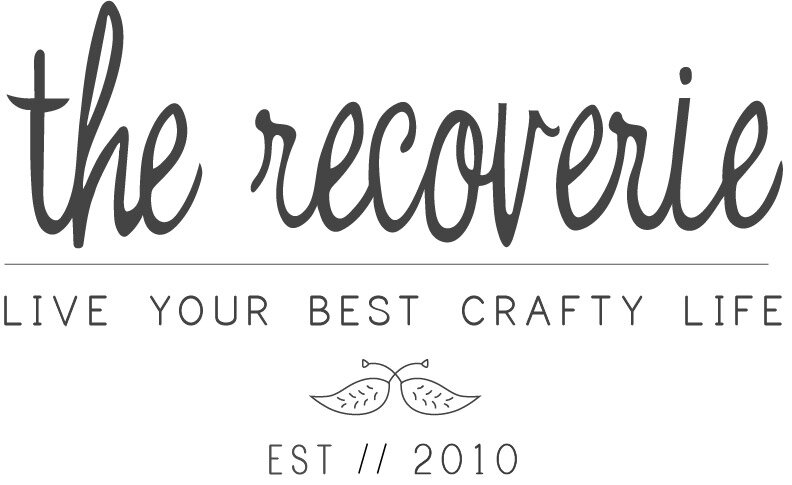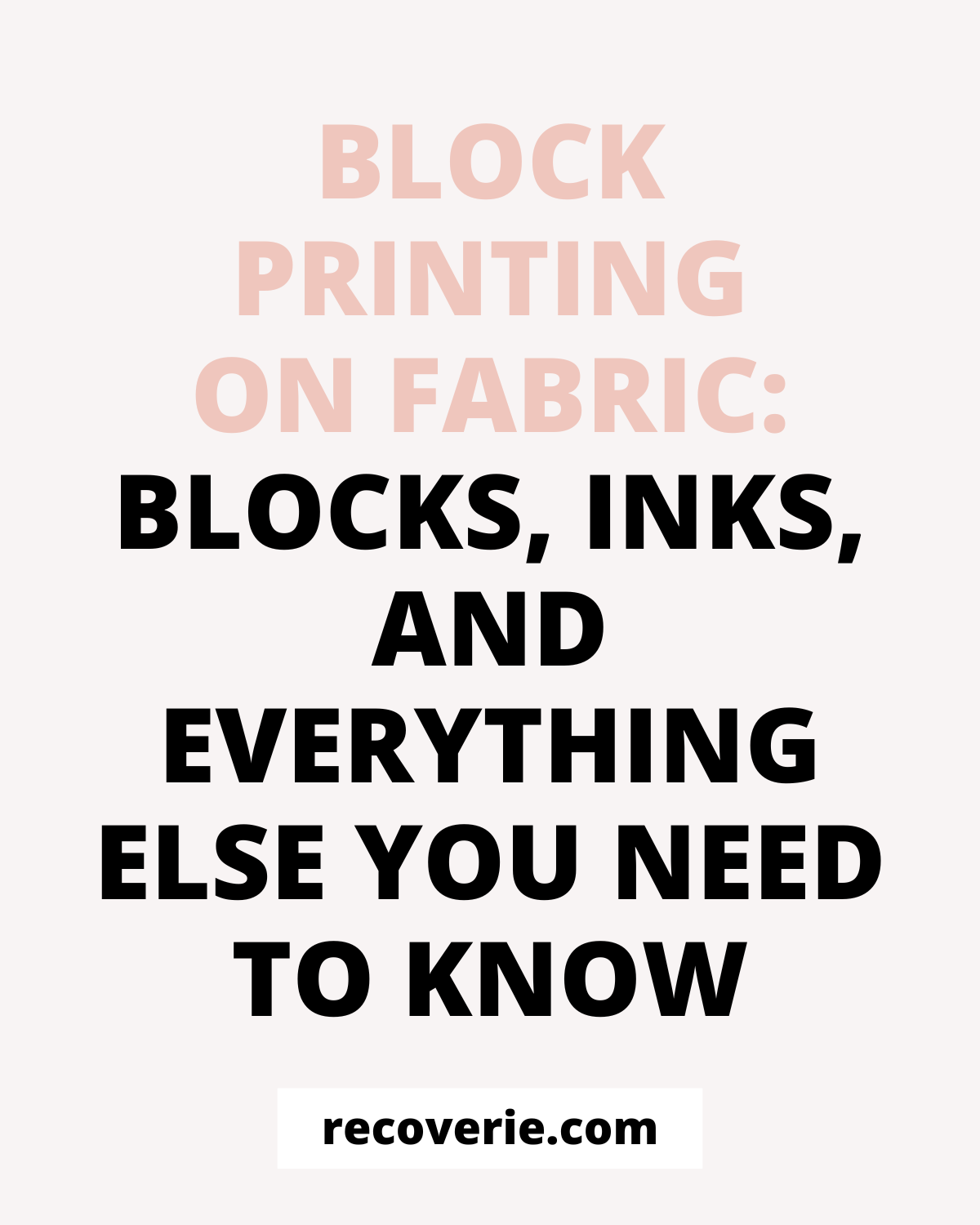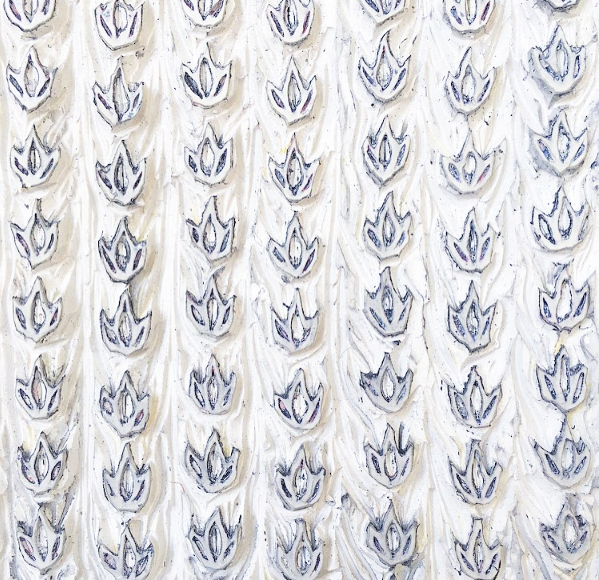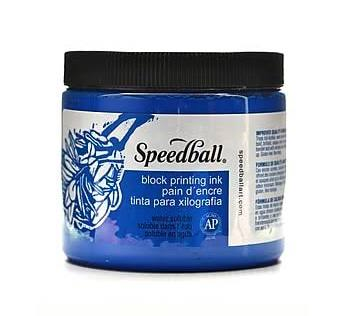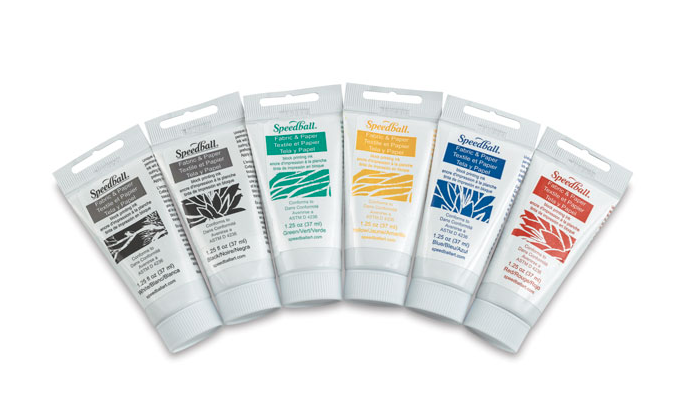Block Printing on fabric: Blocks, Inks, and Everything Else you need to know
Note: This post contains affiliate links for supplies that I have tested and recommend! Please use them if my research and writing inspire you to purchase supplies and make cute things. Thank you for supporting my small business!
<<>>
When I first started experimenting with block printing many years ago, I remember being really overwhelmed walking into the art store to pick up some quick block printing supplies. The aisles were stocked from top to bottom with colored bottles, pads of paper, brushes, markers, and 1,000 different types of pens.
The printmaking section was sparingly stocked, but I ended up leaving that day with a set of carving tools (which I later found out were made for carving wood) and one small linoleum block.
Since that first experience I've done a ton more printing, but it took a while to figure out which were the best types of blocks, inks, and other supplies to use to get the exact look I was after.
I get a lot of questions about what exact supplies to use, so I put together a 2 part guide comparing the different types of blocks and also the different types of fabric inks out there.
If you have been wanting to try out block printing on fabric at home, this guide will get you started on picking out the right supplies for whatever project you decide to try.
So here it is! Part 1 and 2 of the Block Printing on Fabric Guide <3
<<<>>>
Part 1: Linoleum Blocks vs. Rubber Blocks
Before I get started, I just want to mention that although I have used a lot of these materials extensively and have my own unique process, there are no right or wrong ways to go about printmaking. So feel free to experiment! It all depends on the printing technique that gets the end result you love :)
P.S. I will not be going over wood block techniques in this post…maybe one day when I’m feeling super ambitious.
Linoleum
Let's start out with the basics. This is your average linoleum block printing 'block':
Speedball brand blocks are the most common brand you'll probably see around when you start hunting for block printing supplies (whether it's rubber or linoleum). You may see some that are grey as well.
They all create the same effect, the color doesn’t matter. I’d recommend starting out with a smaller carving block, like the 4”x6” to get the hang of carving with lino blocks (that will keep you busy for a while ;)).
Here are a few that I had on hand in my studio -
Obviously the brown linoleum block has been carved and used for printing already, but it's a good example of what it will look like once you get there. You can also see what the grey linoleum block looks like.
From the side, you can see that the linoleum only makes up a tiny part of the carving block. The rest consists of thick particleboard that stabilizes the linoleum and keeps it from bending or snapping.
Again, this could be grey or the same brown color as the other blocks. There's no difference between the colors. These thinner blocks are ‘unmounted’ and have a jute backing that helps keep them from snapping so easily (although I’ve done it!), but one nice thing about these blocks is that you can cut into them for trimming purposes.
So here are some things to think about when you're working with LINOLEUM:
Linoleum is hard. Like literally.
Lino blocks are super dense to the point where it's difficult to push your fingernails in and make a dent. This means that when you're carving, your hand is going to get tired and you'll probably have to take breaks on larger projects.
This mostly is just annoying, but the good thing about that is that because it's so dense, you can get really detailed and refined lines.
Linoleum takes longer to carve
Because it's more dense, you'll find that carving linoleum vs. rubber blocks will take you much longer. Once I carved a design in linoleum that took me 8 hours. Then I carved the same design twice as big, but in rubber. That also took me 8 hours. So you can safely say that linoleum block carving will be much more time-consuming.
Linoleum blocks = oil based inks
This one is subjective, but I only use oil-based inks on linoleum blocks. You can use water-based inks with linoleum, but I haven't had much luck with it. I'll get more detailed about ink later in Part 2.
Ok, now moving on to.....
Rubber
Rubber blocks come in various colors, but most of them carve the same. You may come across blocks that look like any of these:
I've tried out:
- Blue blocks
- Pink blocks (as seen in this kit)
- Grey blocks
- and off-white blocks
The blue tends to be more crumbly than other blocks so I usually avoid it. Same with the off-white blocks. I prefer the grey and the pink blocks because they are the smoothest, so try and find those if you can. In general though, they all work the same.
Here are some things to think about when you're working with RUBBER:
Rubber blocks are super soft & bendy
These blocks are super easy and quick to carve. My students have consistently used the word "therapeutic" to describe the act of carving which is a lot more than I can say for carving linoleum blocks!
Rubber blocks can be easily trimmed and cut
Since they are so soft, it's easy to grab a pair of scissors when you're done carving to trim off excess rubber. If you have a piece of mounted linoleum you won't have that luxury and risk excess paint getting on your fabric.
Rubber blocks = water based inks
Again, this one is subjective, but I only use water based inks on rubber blocks. Water based inks are extremely easy to work with and even easier to clean up.
So, which is better?
Well, the annoyingly short answer is....it depends.
You'll have to ask yourself a few questions to start:
What are you printing on?
If you know that then you can just work backwards.
Paper > Oil > Linoleum
Fabric > Water > Rubber
For example:
If you wanted to print some art for your wall onto paper, you would use linoleum blocks and oil based ink.
If you wanted to print a set of dishtowels for a gift, you'd use rubber blocks and water based ink on your fabric.
Or, feel free to mix those around, these are just what I've found to be the best combinations for a relief print in my experience.
How detailed is your block?
If there are a lot of fine lines then you may be better off with linoleum, even though it's more difficult and time consuming. Creating super detailed designs in rubber can be frustrating if you're not experienced.
Conclusion
Whatever type of block you choose for your relief print, it's important to factor in your pattern and what you'll be printing on. Once you try working with both types of blocks you'll probably know right away which you like better, so when in doubt, give both a test run!
In general, I prefer using rubber blocks even though it can be difficult for details because it's quick and easy, I can use water based inks, and there's less pressure if I mess something up because I can start over again relatively easily (not that that has EVER happened ;) )
<<<>>>
Moving on to...
Part 2: What Type of Paint Do
Use for Block Printing?
<<<>>>
Types of Inks
First off, is it ink? Or paint? Probably ink, but I use both interchangeably so don't get confused :)
You're going to come across a lot of different types of inks when you go pick out your supplies. If you're planning on block printing on fabric you're going to have to pay close attention to labels.
If you google something like 'block printing ink' you'll probably end up with a bunch of listings for ink, but not necessarily what you need. Here's what you need to know:
Speedball brand fabric inks are the most common brand you'll probably see around when you start hunting for supplies. There are a lot of brands out there, some common ones being Versatex by Jacquard and sometimes art stores will have their own store brand inks as well, like Blick.
I prefer Jacquard brand because the colors are very pigmented and they have opaque inks (although Speedball does now too). I recommend starting out by buying the 4oz tubs (that will go a long way).
You can see a full range of colors here to purchase.
On top of that, within these brands there are different TYPES of ink, usually for different purposes and various mediums.
You'll see some that are oil based and some that are water based, some that come in big tubs, and some that come in little squeeze tubes. Some will say block printing and a lot won't. It's hard to figure out what exactly you'll need.
And that’s all before you even decide what colors to buy!
So here are the main questions to consider when picking out your ink:
Oil-based or water-based inks?
Oil-based inks can be printed onto fabric or paper. They are much thicker, drier, and stickier than water-based inks. This can be good and bad. It's good because these inks stick really well to paper and will give you a beautiful and textured print. It's bad because they also tend to dry up in the tube on occasion, and you can go through a tube fairly quickly.
Another issue with oil-based inks is that you may have to wait up to a week for the paint to dry (depending on how thick you made it). If you need to finish a project quickly, then oil-based is not the way to go.
These newbie Speedball oil-based tubes claim to appear like oil, but clean up like water. However, I am suspicious.
I think I bought one a long time ago and didn’t like it. I’ve also heard mixed reviews from other people saying either that they loved it, or it dried up before they barely used any ink.
If you were to try this ink I’d recommend it for paper, not fabric.
Ok, back to the good stuff.
Water-based inks can also be printed onto fabric or paper, although they work better on fabric (side note, if possible, start by pre washing your fabric!). They are a lot more liquid-y, but still pretty thick as far as water-based inks go. They can be a little difficult to print onto paper because the ink is slippery, but it can definitely be done.
A little bit of fabric block printing ink goes a long way, so you'll get more for your money, and clean up is a breeze...I just use warm water to rinse everything off.
What are you printing on?
If you're printing onto paper, I'd recommend using oil based inks. For fabric you can try either type, but if I had to choose I'd go with water based. Also keep in mind you may want to use linoleum blocks in combination with oil based inks. This also may vary depending on the printing technique you are trying to achieve.
If printing on fabric, will you eventually need to wash that fabric?
I say this because once again, you really need to check labels. If your ink's label says "Block Printing Ink" and not much else, then most likely it's for paper and will not hold up through the wash.
The 3 most important things to look for when buying fabric block printing ink
(for fabric printing) are that the label says:
"Water based/Screen printing ink"
"Heat set"
"For fabric" (sometimes it will say for fabric and paper, that's ok too)
If it doesn't say 'heat set' or 'fabric', then assume it's for paper printing. Basically you just want to be really sure that once you go to all the trouble of carving and printing your design, it's not just going to wash out of the fabric.
Conclusion
Water based screen printing inks are great inks to work with when it comes to block printing on fabric. Oil based inks can be used as well, but are better for use on paper.
I prefer using water based inks for my fabric printing, mostly because oil based inks are stickier, more smelly, and dry much more slowly. Water based inks dry fast, I can set them quickly, and not have to worry about smudging things for the next few days.
That's a quick summary on my experience with blocks and inks when designing my printed textiles. If you have anything to add, let me know in the comments below.
If you want to learn more about block printing inks, and how to mix colors, check out my post all about block printing color mixing.
Also, if you’re ready to jump into block printing asap, click the image below to sign up for my free Design A Perfect Block Print course so you can learn to design a pattern you love!
<<<>>>
